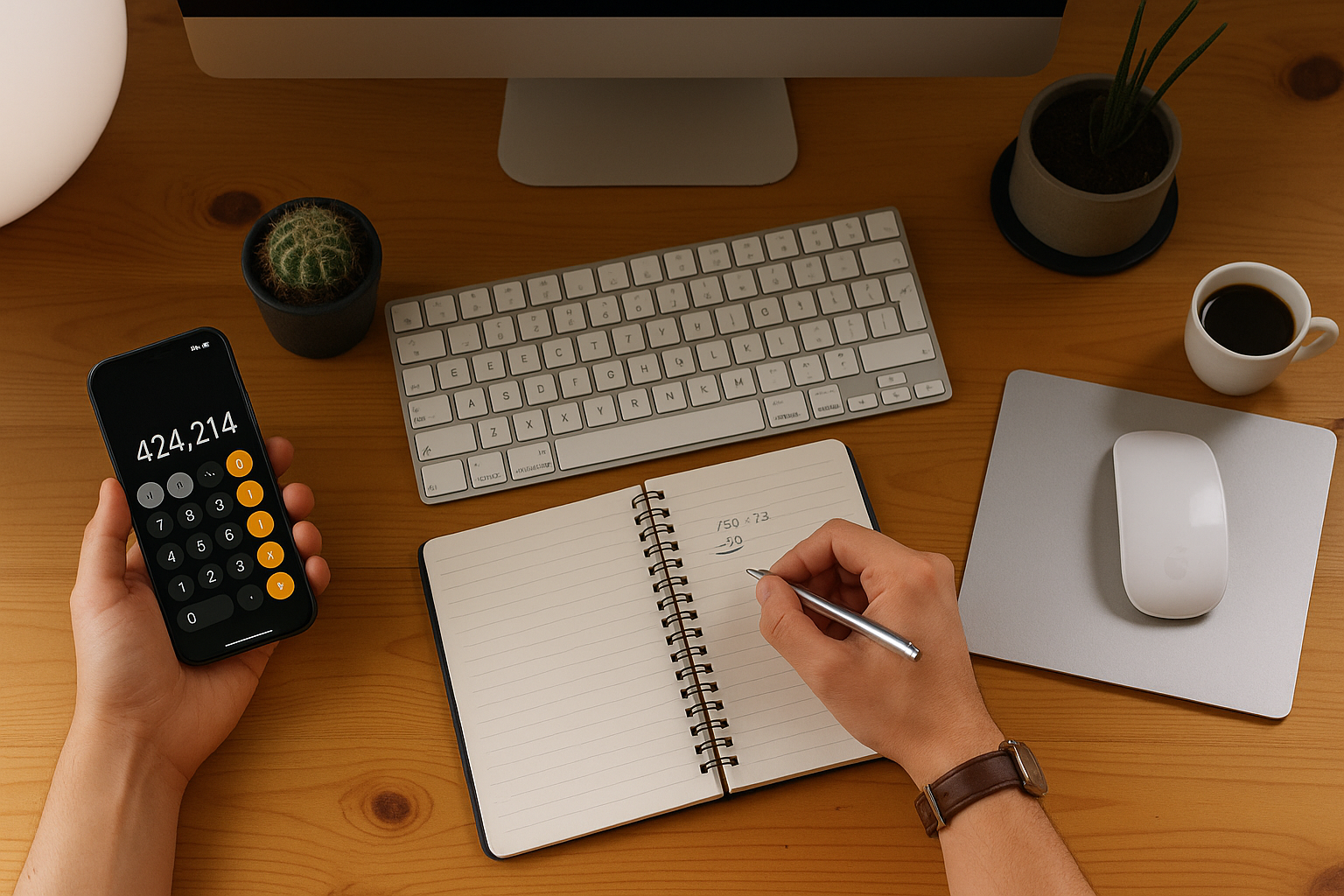
Contents:
What is financial planning?
Why is financial planning important?
Phase One: Budgeting, bills and expenses
Phase Two: Building an emergency fund
Phase Three: Saving for your pension
Phase Four: Paying off short-term debts
Phase Five: Growing your emergency fund

What is financial planning?
Financial planning is about managing your current finances and preparing for the future. It covers things like:
- Tracking your income and expenses
- Making a manageable budget
- Planning for financial emergencies
- Saving for your pension
- Paying off loans and other debts.
Why is financial planning important?
Financial planning helps you set financial goals and work towards achieving them. This is important because the goals you set yourself will give you a better and more secure financial future.
Managing and reviewing your finances on a regular basis allows you to see how you’re progressing towards those financial goals.
Phase One: Budgeting, bills and expenses
In this phase, we’ll cover making a budget that will cover your fixed bills and essential expenses.
1. Calculate your total income
Look at the income you’re receiving every month
Start by working out all the money you have coming into the house every month. Make sure you include:
- Wages
- Benefits
- Child support
- Contributions from working members of your household.
Check if you’re eligible for further support
There’s a chance you might be entitled to benefits and tax perks you haven’t applied for yet. In the UK, it’s estimated that more than £20 billion is going unclaimed — and some of that might be available to you.
The Clockwise Benefits Calculator can help you work out what additional state support you might be entitled to.
2. Make a budget
A budget helps you ensure that the money coming in is meeting your needs and goals.
When you’ve calculated your full income, you need to look at where you’re spending it.
Track your outgoings
Your bank and credit card statements should help you to see where your income is going every month.
Your monthly outgoings will typically include your:
- Household bills
- Rent or mortgage
- Food and groceries
- Mobile phones
- TV and/or broadband
- Transport costs, such as buses, trains or fuel
- Loan repayments, including interest
- Life insurance
- Pension contributions.
But you need to remember not all months are the same. For example, in some months, you might have annual expenses, like holidays, Christmas, insurance renewals, boiler servicing or your vehicle’s MOT.
For the purposes of your budget, it might help to take these annual costs and divide them into monthly payments.
Categorise your outgoings
When you’ve worked out your outgoings, you can split those into three categories:
- Fixed expenses — things you need, but can’t easily economise on
E.g. council tax, rent/mortgage, insurance - Essential expenses — things you need and may be able to economise on
E.g. utilities, fuel, groceries - Optional expenses — things you want, but could economise on
E.g. eating out, hobbies, subscriptions, holidays.
This will help you see how much you’re spending in each category and whether that’s:
- in line with what you have available to spend; and
- what you want to be spending your money on.
Set monthly spending limits
Set a monthly spending limit for each of the three categories we looked at in the last section — starting with your fixed expenses, which are already decided.
If you want to increase your limit in one category, you’ll need to make savings in one of the others.
For example, let’s say you want to commit to saving a set amount of money each month. Add this amount to your fixed expenses category, then make adjustments to the limits on your essential and optional expenses.
But don’t overdo it
Your budget should be sustainable and easy to manage. It should allow you to enjoy life, while also taking care of your needs and goals.
Cutting your spending too much can make you miserable — and you’re more likely to resort to harmful overspending to make yourself feel better.
Likewise, being afraid to spend your money could mean you miss out on opportunities that would be worthwhile for you.
How to manage your budget
Once you’ve made your budget, you need to find a way to manage it. There are a number of different options for this, but here are three you might consider:
Budget accounts
The old-fashioned way to budget was to split cash into different envelopes, each with a different purpose, e.g. food, bills and fuel.
The modern digital equivalent is called a budget account or ‘jam jar account’. It’s a single bank account, but you can divide your money into different ‘jars’ e.g. for food, bills and fuel.
Open banking
Open banking is accessed via an app. It allows you to see all your accounts in one place, so you can see at a glance your current account balance, credit card transactions, savings total etc.
Popular open banking apps include Emma, MoneyDashboard and Nova, which all offer their basic plans for free.
They’re a good way to keep track of what you’re spending and make sure you’re sticking to the budget you’ve set yourself.
Spreadsheet
If you’re more of a traditional self-starter, you might prefer to manage your budget using a spreadsheet on your computer.
You can create your own custom spreadsheet, or try this budget planner template from Money Saving Expert.
3. Using credit cards and/or loans
Are you relying on credit cards and/or loans to pay for your essentials?
If YES:
- Ensure you’re putting money aside for your fixed expenses, such as mortgage/rent, council tax and insurance
- Look for ways to save money in other areas
- Get some debt counselling from a reputable charity, like stepchange.org.
If NO:
- Make minimum payments on all your debts
- Consider insuring your life and income.
4. Manage your existing debt
Do you have any debts over 10% APR?
If YES:
- Work out a payment plan to pay off your debts
- Refinance to get cheaper interest rates if/when available
- If you can’t afford to deal with your debts, it’s advisable to get debt counselling from a reputable charity, such as stepchange.org.
If NO:
- Move on to Phase Two.
Phase Two: Building an emergency fund
What is an emergency fund?
An emergency fund is like a rainy day fund. It’s money you save for emergencies. For example, if you have a large and unexpected bill you haven’t budgeted for, or if you temporarily lose your income.
The fund is just for emergencies and nothing else. If you make a withdrawal from it, you should make it a priority to replace the funds as soon as possible.
How much should an emergency fund include?
Your initial emergency fund should include everything you need to live on for 1-3 months. This is a good target if you’re already paying off debts. It means that if an emergency arises, you’ll be less likely to need another loan to pay for it.
Your fund should cover all your fixed and essential expenses as a minimum. But it’s sensible to include some extra funds, because although your emergency budget might be tighter, that shouldn’t mean you have to suffer.
If you don’t have debts to pay off, you should think about building an emergency fund to cover you for 3-6 months. And if your future is uncertain, think about an even larger fund, covering 9-12 months.
Where should an emergency fund be kept?
Your emergency fund should be immediately available — so you can withdraw the funds whenever you need them, with no notice period and no penalty.
Our advice is to keep it in a current account or an instant access savings account.
Phase Three: Saving for your pension
This phase is about making sure you’re enrolled in your employer’s workplace pension scheme. You can find out if you’re eligible for a workplace pension on the government website. If you’re eligible and you haven’t joined yet, you can ask to be enrolled.
How the workplace pension scheme works
All employers should now auto-enroll their eligible employees onto their workplace pension scheme.
To join the scheme you need to pay in a percentage of your take-home pay each month. And your employer will add a contribution based on the percentage you pay.
The more you pay in, the more your employer will contribute, so it’s worth paying in as much as you can afford.
You can withdraw from your workplace pension from the age of 55.
Tax exemption
You don’t need to pay income tax on your pension contributions.
Normally, if you’re paying the basic rate of income tax, £20 tax would be deducted from every £100 you pay in.
But for your workplace pension, you can pay in the full £100 without being taxed on it.
Salary sacrifice
Some employers will let you pay into your pension using a ‘salary sacrifice’.
This means that instead of you earning £100 and putting it into your pension, your employer reduces your salary by £100 and increases their contribution by £100.
Sacrificing some of your salary like this means you’ll save on your National Insurance. Your employer will also save on their National Insurance and they may pay some or all of that saving into your pension as well.
Growth
Over time, your pension fund will accumulate interest and grow. Until, eventually, the amount of interest you’re earning on your pension each month will be more than what you’re paying in yourself.
The earlier you start contributing to your pension, the more time there will be for your fund to grow and the more money you can expect to get when you retire.
How much pension am I likely to get?
For an idea of the pension you’ll get, try using the Aviva Retirement Planner.
If you try varying the amount you’re paying in, you can see how that affects the amount you’ll get back when you retire.
What if I already have several pensions?
If you’ve started private pensions at previous jobs you’ve had, but are no longer paying into them, you should be able to combine these into one.
Check the terms of each pension before you decide which one to keep, as some might have better benefits.
Can I retire before I’m 55?
Yes, but you’ll need to have saved expenses to cover the years from the date you retire until your pension kicks in.
For example, if you wanted to retire at the age of 50, you’d need to save enough to cover your expenses and lifestyle for five years.
What if I opt out of the workplace pension scheme?
Opting out of the scheme isn’t advisable.
The money you’d save by not paying in would be much less than the money you’d make through the scheme — and you’ll have no pension at the end.
If you opt out of the workplace pension scheme, you may be entitled to a state pension.
State pension
The full state pension is currently £185.15 a week, but the pension you’ll get will depend on your National Insurance contributions.
To get any pension at all, you would need to have paid 10 years’ contributions.
To get a full state pension, you would need to have paid 35 years’ contributions.
You can check what state pension you’d be likely to get using the government’s State Pension Forecast tool.
The age at which you can claim state pension is currently 66, but this is set to rise to 68 as life expectancy increases.
Savings
You could also put your regular savings towards your retirement. You can open a Savings account at Clockwise Credit Union.
Phase Four: Paying off short-term debts
If you have expensive short-term loans, you should make it your priority to pay these off as soon as you can. If you don’t have these loans, you can move on to Phase Five.
1. Prioritise your debts
There are two ways to pay off your debts: the debt avalanche and the debt snowball. Let’s look at each of these in more detail.
What is debt avalanche?
Using the debt avalanche method, you identify the debts that have the highest interest rates and pay those off first.
Let’s say you have three loans:
- Low interest credit card
- Medium interest credit card
- High interest personal loan.
In your budget, you should have enough to cover the minimum payment on all of these debts, plus extra to cover the interest.
You’d start by paying the minimum amount on all three debts and put all of the extra money into paying off debt C — because that’s the one with the highest interest.
When debt C is cleared, you switch the extra allowance to debt B, until that’s paid off, then finally to A.
What is debt snowball?
The debt snowball method focuses on getting the smallest debts paid off quickly. Because, psychologically, seeing those small debts disappear is more motivating than seeing the balance on one large debt come down slowly.
You’d end up paying more interest than you would using the avalanche method, but it would be more satisfying and you’d be less inclined to slip back into bad habits.
2. Consider refinancing your debts
This is also known as loan consolidation.
Refinancing your debts means taking out one big loan and using that money to pay off all your smaller loans.
With your smaller loans paid off, you’ll just have one big loan to take care of and one lender to pay every month. This will make your debt easier to manage and could even lower your overall interest rate.
Phase Five: Growing your emergency fund
When your short-term loans are paid off, you should turn your attention back to your emergency fund.
If you initially saved 1-3 months’ expenses, you should now think about increasing that to 3-6 months.
Do you need help with financial planning?
If you’ve read our financial planning guide for beginners and are looking to get your finances in order, maybe Clockwise Credit Union can help.
We offer:
For more information, click the links above or get in touch with the team on 0330 1755 792 (9.30am to 4.00pm, Monday to Friday).








